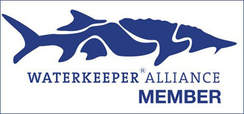|
Pearl Riverkeeper commemorated 50 years of the Clean Water Act by sampling for PFAS chemicals in the Pearl River near the gorgeous Byram Swinging Bridge. Waterkeeper Alliance is partnering with Cyclopure to test waters around the country for PFAS, a class of widely used synthetic chemicals, known as “Forever Chemicals” that break down very slowly over time. EPA recently announced four new drinking water national health advisories, cutting PFAS lifetime exposure limits to a fraction of what was previously thought to be safe. Check out how you can get your own drinking water tested for PFAS here: https://volunteer.consumerreports.org/MSwaterstudy?EXTKEY=BEC26EE002
In 1995, the Army Corps of Engineers built a weir at Walkiah Bluff near Picayune, MS to split flow between the East and West Pearl Rivers. From the beginning, the weir sent 70% of the water down the West Pearl and 30% down the East. For years the weir has been deteriorating and this year it is almost gone. The diversion is now sending about 90% of the water down the West Pearl. Since the weir at Walkiah Bluff has failed and water flow has been greatly reduced to the East Pearl River, a USFWS representative and our PRK Board member, Jessica Gauley, visited the area in June to check the status of the local mussel population. The East Pearl water level is extremely low and dead mussels are littering the dried-up section of the riverbed. USFWS looked for any mussels listed on the threatened or endangered species list but did not find any. US Army Corps of Engineers representatives were also on the scene and were reported to be monitoring the river level with drones. Jessica said that when she could see what looked like thousands of mussels crowded together in the remaining river water. Photos courtesy: Mike Chapman
Plan to repair weir presented: https://www.picayuneitem.com/2022/06/plan-to-repair-weir-presented-elected-officials-seek-more-funding/?fbclid=IwAR3jzE-9zn0u4xOXIUN6lHmJQvGl8PWR_3_YJg09ugNzWrb3uTNnGNAUOXI Ross Barnett Reservoir 2022 dredging operations began in May. Phase 1 will include all the subdivisions on the south shore working east to west. Phase 2 will be the three subdivisions on north shore. All channels will be dredged to an elevation of 292 feet above sea level, allowing 5.5 feet of depth at normal pool (297.5) and 4 feet at winter pool (296.0).
15-20 acres of land along Spillway Rd have been clear-cut to create spoil ponds or "confined disposal facilities (CDFs) for the dredged material. The mature timber from the clear-cut was sold by PRVWSD. The spoil from dredging will be pumped to the CDFs via floating pipelines. The CDFs are designed to allow the sediment to settle to the bottom and remain there while the water is slowly released back to the Reservoir. The two CDFs that have been built have interior surface areas of 1 acre and 3 acres. Additional CDFs will be required, and will be constructed as the dredging proceeds. Pearl Riverkeeper is utilizing environmental DNA sequencing technology (qPCR) to determine the fecal contamination sources on one of our Strong River watershed creeks. Many of our rural creeks are impacted by bacteria through various non-point sources such as failing septic tanks, small poultry operations, cattle pastures, and sediment erosion. This testing will help us narrow down the contamination sources and could potentially lead to remediation plans and subsequent water quality improvements. Want to support our work towards cleaner water? Become a member here: https://www.pearlriverkeeper.com/become-a-member.html. Thank you to @Patagonia for sponsoring this work.
Operation Shoestring provides year-round academic, social and emotional support to children in central Jackson from pre-K – 12th grade, while supporting and providing resources to their families. This summer, Pearl Riverkeeper is partnering with Operation Shoestring to provide water education for their Project Rise summer camp. From Operation Shoestring: "At our Project Rise summer camp kids like Georgia have empowering, exciting, and enriching experiences that broaden the scope of what she thought was possible in her life. Abby Braman, executive director of Pearl Riverkeeper was the first person Georgia had ever met that worked in environmentalism, and now the Walton Elementary student thinks that maybe she'll grow up to be like her. 'She protects nature, like the turtles. She even holds them! It's so cool,' Georgia reflected when she got to Operation Shoestring. And it's through these experiences that Georgia and her peers build the foundations of a healthy, hopeful, and self-determined life. Partner with us at operationshoestring.org/support" Pearl Riverkeeper was also fortunate this summer to spend time at beautiful Lake Pushmataha chatting with the Choctaw Youth Conservation Corps about environmental non-profits, careers in conservation, the importance of water quality protections and demonstrating water testing procedures. "The Choctaw Youth Conservation Corps is a comprehensive youth program that provides tribal youth work-based opportunities in the field of environmental conservation, natural resources management, and related aspects of the outdoor professional study through a 4-week long summer project that strengthens the protection, conservancy, and maintenance of natural resources on the Choctaw tribal lands, with an emphasis on the preserving cultural significant locations, such as Nanih Waiya. Participants assist with actual natural resources management work tasks, participate daily in hands-on activities in order to build on tribal stewardship and appreciation for our tribal natural resources and participate in educational, cultural and environmental learning taught by tribal, state and federal researchers and professionals." Thank you, Mitzi Reed and CYCC!
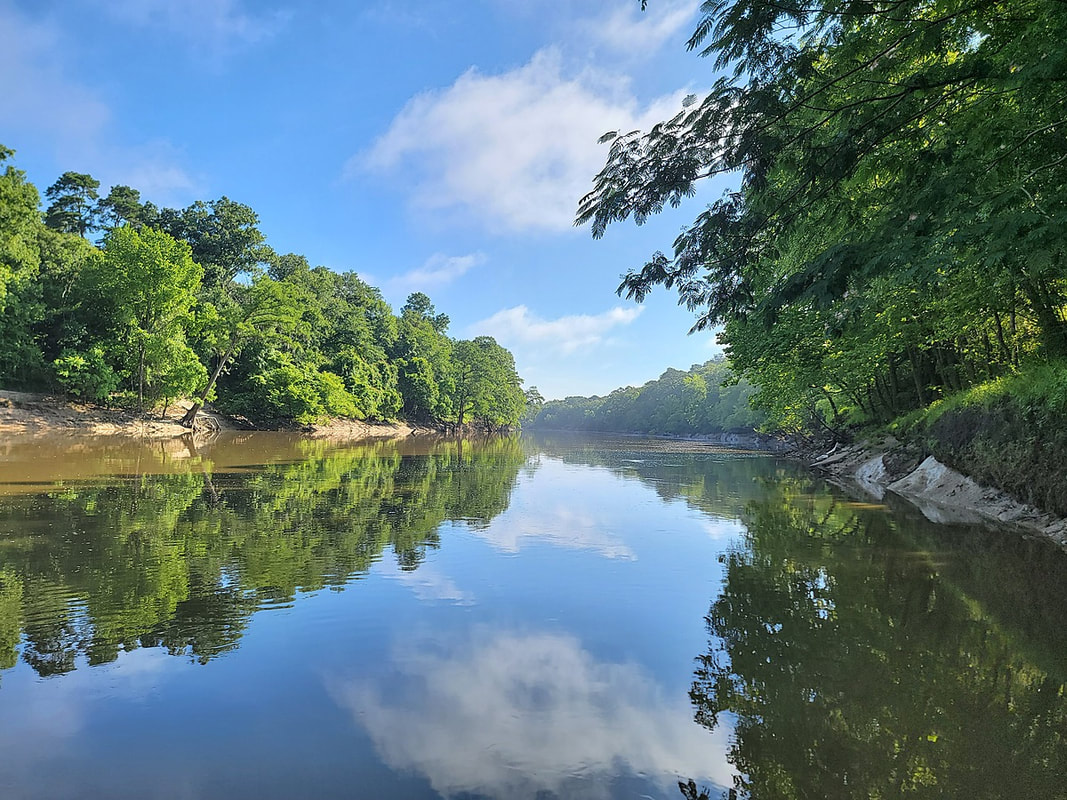 In 2021, Pearl Riverkeeper volunteers conducted over 260 E.coli bacteria tests at 20 Pearl River, Strong River, Bogue Chitto River and Ross Barnett Reservoir locations in order to provide you with information about whether it was safe to recreate!
What is E.coli? In 2021, Pearl Riverkeeper volunteers conducted E.coli testing at these locations:
Results are posted on the Pearl Riverkeeper website, Swim Guide website, Water Rangers website and through text alerts. MS Water Stewards uses the "stoplight system".
Below are pie charts listing the percentages of Pass (E.coli levels within Green or Yellow levels) and Fail (E.coli levels in the Red or "relatively unsafe for human contact") for each location during the 2021 testing year. What's next? Pearl Riverkeeper is continually expanding our citizen science water quality monitoring program. MS Water Stewards will be training another group of Bacteriological and Water Chemistry Monitoring volunteers in April 2022. Water Chemistry and Bacteriological Monitoring at the Jackson area locations will be used to assess impacts to the Pearl River and its urban tributaries from sanitary sewer overflows and leaks. Additional water testing locations on the Strong River and Sellers Creek will be assessed to help determine the source of the high E.coli levels in those locations. Water Chemistry Monitoring volunteers will continue to look for trends in water quality by testing for pH, dissolved oxygen, turbidity, hardness, alkalinity and temperature. HOW CAN YOU GET INVOLVED?
Thank you to all of our volunteers, supporters, MS Water Stewards and our sponsor, Patagonia, for making this year of water testing a huge success!
According to EPA's most recent Toxic Release inventory (TRI) National Analysis, 4.5 million pounds of toxic chemicals were dumped into the Pearl River in 2019. The vast majority of this toxic waste came in the form of nitrates from 3 poultry processing companies, Tyson Foods, Sanderson Farms and Peco Foods. The amount of TRI pollutants entering the Pearl River watershed has increased 47% since Pearl Riverkeeper began tracking the reports in 2015. The Tyson Farms plant in Carthage is ranked #1 for permitted releases to water in all of Mississippi.
Louisiana ranks 4th out of 56 states/territories nationwide based on total releases per square mile (rank 1 = highest releases). Mississippi ranks 12th out of 56. The TRI is easily searchable by state, county, city or zip code: https://www.epa.gov/trinationalanalysis/where-you-live.
Join forces with Pearl Riverkeeper to help protect our watershed by signing up for our newsletter, becoming a member or becoming a Water Steward. 🚨🚨A 5-foot long Gulf sturgeon was detected in the Pearl River near LeFleurs Bluff State Park ABOVE the Jackson Waterworks dam this past spring!! The Gulf sturgeon, originally tagged by Kayla Kimmel and her USFWS Baton Rouge team in 2017, was detected by a tag reader from a Gulf sturgeon telemetry study being conducted by Dr. Michael Andres’ lab from The University of Southern Mississippi funded by the USFWS. The last confirmed Gulf sturgeon sighting in the Jackson area was 1996. The Gulf sturgeon is an anadromous species that lives in saltwater but travels up freshwater rivers to spawn. The 2 lowhead dams on the Pearl River are barriers to their natural migration and spawning patterns. Numerous sturgeon studies are currently being conducted on the Pearl River which will help scientists in their recovery efforts for this gorgeous endangered species. This is such exciting news for the Pearl River and the Gulf sturgeon that the national press picked up the story! Click below to read the story in the Miami Herald. 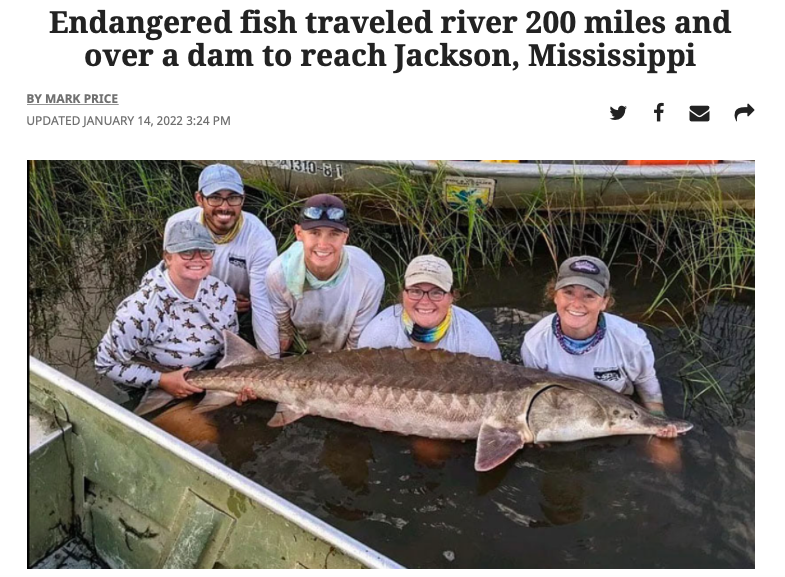 The University of Southern Mississippi graduate students and research technicians hold an adult Gulf sturgeon captured in the Pascagoula River. Pictured from left to right: Elizabeth Greenheck, Alfonso Cohuo, Austin Draper, Kasea Price, and Kati Wright. (Photo credit: Michael Andres, The University of Southern Mississippi) 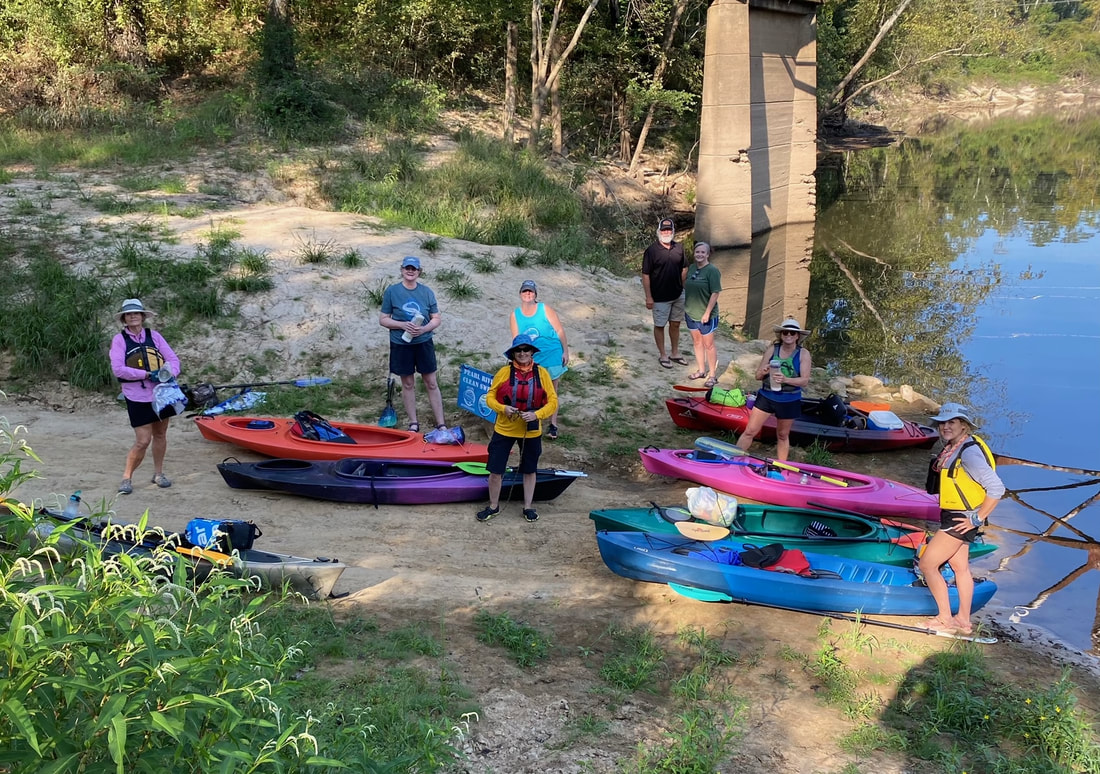 Always exciting to learn of a Gulf sturgeon sighting in the Pearl. This fish was caught in a fisherman's net on the Pearl River near Atwood Water Park, Monticello, MS last week and it was released unharmed. During this time of the year, Gulf sturgeon are migrating from the Gulf of Mexico into coastal rivers where they spawn. In the summer, the sturgeon will spend their time in between their upstream spawning areas and the estuaries on the coast. Gulf sturgeon studies in the Pearl River Several on-going scientific studies of this endangered species are being conducted by USFWS:
If you experience a Gulf sturgeon sighting, please note your exact location/time and date/condition and size of the fish, take a photo and share it with USFWS. Of course, it is illegal to harm or otherwise interfere with an endangered species. By: John Kees, NCU herbarium intern 1. Sedge (Carex spp.) -An important component of natural forest understory and wetland communities. -The federally endangered Mitchell’s satyr (Neonympha mitchelliana) uses Carex as host plants, along with several skipper butterflies. -More-or-less evergreen, most active in the cold-season, and can be used as a groundcover or Liriope alternative. Some species do well as annually mowed lawn substitutes in shade, best paired with shade-tolerant forbs and spring ephemerals e.g. Mississippi river wakerobin (Trillium foetidissimum), Lapham’s wild blue phlox (Phlox divaricata ssp. laphamii), native violet woodsorrel (Oxalis violacea), spring-beauty (Claytonia virginiana), perfoliate bellwort (Uvularia perfoliata). *Recommended species for PR drainage: Carex socialis (Social sedge), Carex joorii (Cypress swamp sedge), Carex cherokeensis (Cherokee sedge) Carex crinita (fringed sedge), Carex abscondita (hidden sedge), Carex glaucescens (pendulous sedge), Carex flaccosperma (blue sedge), Carex blanda (common wood sedge), Carex atlantica spp. capillacea (prickly bog sedge), Carex intumescens (bladder sedge), Carex lurida (sallow sedge), Carex vulpinoidea (Fox sedge), Carex leavenworthii (leavenworth’s sedge), Carex crus-corvi (crowfoot sedge). 2. Bluestem (Andropogon spp./Schizachyrium spp.) -Hosts for many different skipper butterflies (Hesperiidae) and a variety of other insects. -Provides important cover & forage for wildlife during the winter. -Native bunchgrasses can be interseeded with clumps of flowering native forbs to suppress weeds, help support stems, and enhance wildlife habitat. *Recommended species for PR drainage: Schizachyrium scoparium (little bluestem, formerly Andropogon scoparius), Andropogon gerardii (big bluestem), Andropogon ternarius (splitbeard bluestem), Andropogon gyrans (Elliott’s bluestem), Andropogon mohrii (Mohr’s bluestem), Andropogon glomeratus var. glaucopsis (purple bluestem), Andropogon virginicus var. glaucus (white bluestem) *Other great commercially available native grasses: switchgrass (Panicum virgatum), Prairie indiangrass (Sorghastrum nutans), lopsided indiangrass (Sorghastrum secundum), pineywoods dropseed (Sporobolus junceus), prairie three-awn (Aristida purpurascens), southeastern wildrye (Elymus glabriflorus), florida paspalum (Paspalum floridanum), Plicate paspalum (Paspalum plicatulum), purple lovegrass (Eragrostis spectabilis), Elliott’s lovegrass (Eragrostis elliottii), Gamagrass (Tripsacum dactyloides), silky oatgrass (Danthonia sericea), poverty oatgrass (Danthonia spicata), Black needlegrass (Piptochaetium avenaceum), Purpletop (Tridens flavus), Longspike tridens (Tridens strictus), muhlygrass (Muhlenbergia capillaris), silkyscale grass (Anthaenantia rufa). 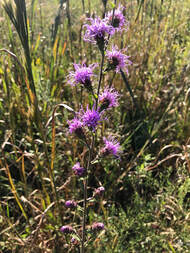 Liatris squarrulosa, Photo: John Kees Liatris squarrulosa, Photo: John Kees 3. Blazing-star (Liatris spp.) -Flowers attract hummingbirds and a wide variety of bees, butterflies and pollinating flies and wasps. -Important nectar source for the monarch butterfly (Danaus plexippus) during fall migration. *Recommended species for PR drainage: Liatris squarrulosa (appalachian blazingstar), Liatris elegans (elegant blazing-star), Liatris pycnostachya var. lasiophylla (louisiana prairie blazingstar), Liatris spicata var. resinosa (southern gayfeather), Liatris squarrosa (scaly blazingstar). 4. Goldenrod (Solidago spp.) -Genus hosts 100+ species of butterflies and moths and a wide variety of other native insects. -Flowers attract bees, butterflies, and pollinating flies, wasps, and beetles. -Pollen source for many pollen specialist bees. *Recommended species for PR drainage: Solidago rugosa (crinkle-leaf goldenrod), Solidago caesia var. zedia (gulf coast bluestem goldenrod), Solidago fistulosa (pineywoods goldenrod), Solidago petiolaris (downy goldenrod), Solidago auriculata (eared goldenrod), Solidago nitida (shining goldenrod), Solidago mexicana (southern seaside goldenrod), Solidago speciosa (showy goldenrod). 5. Native sunflowers (Helianthus spp.) -Host plants for 50+ species of butterflies and moths, including the silvery checkerspot (Chlosyne nycteis). -Flowers attract a variety of bees, butterflies, and pollinating flies, wasps, and beetles. -Pollen source for many native pollen specialist bees. *Recommended species for PR drainage: Helianthus mollis (ashy sunflower), Helianthus atrorubens (darkeye sunflower), Helianthus heterophyllus (variable sunflower), Helianthus resinosus (resindot sunflower), Helianthus simulans (muck sunflower), Helianthus debilis (beach sunflower), Helianthus divaricatus (woodland sunflower), Helianthus microcephalus (smallhead sunflower). 6. American aster (Symphyotrichum spp.) -Very late-blooming, into December for some species. -Host plant for pearl crescent (Phyciodes tharos). -Flowers attract a variety of bees, butterflies, and pollinating flies, wasps, and beetles. Pollen source for many native specialist bees. *Recommended species for PR drainage: Symphyotrichum cordifolium (heartleaf aster), Symphyotrichum patens (patent aster), Symphyotrichum elliottii (Elliott’s aster), Symphyotrichum lateriflorum (calico aster), Symphyotrichum dumosum (bushy aster), Symphyotrichum novae-angliae (New England aster), Symphyotrichum praealtum (willowleaf aster), Symphyotrichum drummondii (Drummond’s heartleaf aster). 7. Ironweed (Vernonia spp.) -Flowers are very attractive to butterflies and long-tongued bees. -Host plant & supports a few pollen specialist bees. *Recommended species for PR drainage: Vernonia angustifolia (narrowleaf ironweed), Vernonia gigantea (giant ironweed), Vernonia texana (Texas ironweed). 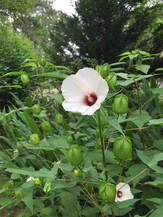 Hibiscus lasiocarpos, Photo: John Kees Hibiscus lasiocarpos, Photo: John Kees 8. Native hibiscus (Hibiscus spp.) -The hibiscus bee (Ptilothrix bombianus) feeds only on native Hibiscus. -Host plant for a variety of beneficial insects, 30+ species of butterflies and moths. -Flowers attract hummingbirds, solitary bees, pollinating flies, wasps, and beetles. *Recommended species for PR drainage: Hibiscus aculeatus (pineland hibiscus), Hibiscus coccineus (scarlet rosemallow), Hibiscus lasiocarpos (woolly rose-mallow), Hibiscus laevis (halberd-leaved hibiscus). 9. Wild-indigo (Baptisia spp.) -Host for a few species of moths and flowers attract a variety of pollinators. *Recommended species for PR drainage: Baptisia nuttalliana (nuttall’s wild-indigo), Baptisia alba (white wild-indigo), Baptisia leucophaea (cream wild-indigo), Baptisia sphaerocarpa (yellow wild-indigo). 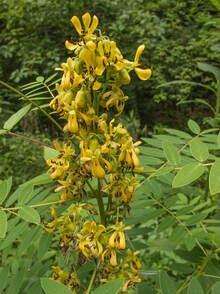 Senna marilandica, Photo: wildflower.org, Stephanie Brundage Senna marilandica, Photo: wildflower.org, Stephanie Brundage 10. Maryland wild-senna (Senna marilandica) -A preferred host plant for cloudless sulphur (Phoebis sennae) and several butterflies in the genus Eurema, less aggressive than partridge pea (Chamaecrista fasciculata). 11. Native sage (Salvia spp.) -High-value nectar plants for solitary bees, butterflies, and hummingbirds. *Recommended species for PR drainage: Salvia azurea ssp. azurea (giant blue sage), Salvia lyrata (lyreleaf sage), Salvia coccinea (scarlet sage). 12. Native verbena (Verbena spp./Glandularia spp.) -Flowers attract long-tongued bees, butterflies, hummingbirds, and other pollinators. -Good alternative to Lantana (Lantana x strigocamara), stiff vervain (Verbena rigida), and Brazilian vervain (Verbena brasiliensis), invasive species in the same family often promoted for pollinator gardens. *Recommended species for PR drainage: Glandularia canadensis (rose vervain, formerly Verbena canadensis), Verbena xutha (gulf vervain), Verbena halei (Texas vervain), Verbena carnea (Carolina vervain). 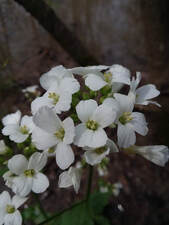 Cardamine bulbosa, Photo: Will McFarland Cardamine bulbosa, Photo: Will McFarland 13. Spring cress (Cardamine bulbosa) -Early spring flowers attract a variety of pollinators. -Host for the cabbage white butterfly (Pieris rapae) and falcate orangetip (Anthocharis midea). 14. Penstemon (Penstemon spp.) -Foxglove-like blooms attract hummingbirds, long-tongued bees, and butterflies; a few species are also reported to use Penstemon as a host plant. *Recommended species for PR drainage: Gulf coast beardtongue (Penstemon tenuis), loose-flowered beardtongue (Penstemon laxiflorus), Foxglove beardtongue (Penstemon digitalis). 15. Milkweed (Asclepias spp.)* -Only host plants for the Monarch butterfly (Danaus plexippus); flowers visited by a variety of pollinators. -Avoid nonnative Tropical milkweed (Asclepias curassavica), which supports high concentrations of OE (Ophryocystis elektrosc irrha) a parasite that kills monarchs, and has evergreen foliage which can attract the overwintering generation of monarchs to breed instead of flying to overwintering sites in Mexico. Recommended species for PR drainage: Asclepias viridis (Green antelopehorns), Asclepias tuberosa (butterfly milkweed), Asclepias perennis (white swamp milkweed), Asclepias verticillata (Whorled milkweed), Asclepias variegata (red-ring milkweed), Asclepias hirtella (tall green milkweed), Asclepias lanceolata (few-flower milkweed), Asclepias humistrata (sandhill milkweed), Asclepias obovata (pineland milkweed), Asclepias michauxii (Michaux’s milkweed), Asclepias longifolia (longleaf milkweed), Asclepias rubra (purple savannah milkweed). 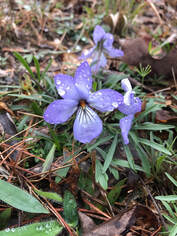 Viola pedata, Photo: John Kees Viola pedata, Photo: John Kees 16. Violet (Viola spp.) -Host plant for fritillary butterflies in the genus Speyeria. -Important early spring nectar plant for bees, preferred by some specialist bees. *Recommended species in PR drainage: Viola walteri (Walter’s violet), Viola pedata (birdsfoot violet), Viola septemloba (coastal plain violet), Viola palmata (wood violet), Viola primulifolia (primrose-leaved violet), Viola sagittata (arrowleaf violet). 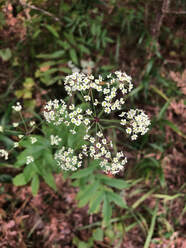 Oxypolis rigidior, Photo: John Kees Oxypolis rigidior, Photo: John Kees 17. Cowbane (Oxypolis spp.) or bishopweed (Ptilimnium spp.) (native black swallowtail hosts) -Host plants for Eastern black swallowtail (Papilio polyxenes). -Flowers attract a variety of pollinators. *Recommended species for PR drainage: Oxypolis rigidior (pig-potato), Oxypolis filiformis (water-cowbane), Ptilimnium capillaceum (eastern bishopweed), Ptilimnium nuttallii (laceflower). 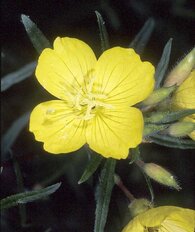 Oenothera fruticosa ©Robert Mohlenbrock Oenothera fruticosa ©Robert Mohlenbrock 18. Bee-blossoms (Oenothera spp.) -Host plant for white-lined sphinx moth (Hyles lineata), also primrose moth (Schinia florida) and several other specialists. -Supports several specialist bees. -Oenothera biennis has night-opening flowers pollinated primarily by sphinx moths. *Recommended species for PR drainage: Oenothera lindheimeri (Lindheimer’s beeblossoms), Oenothera fruticosa (sundrops), Oenothera biennis (biennial evening-primrose). 19. Hoarypea (Tephrosia spp.)* -Host plant for several oligophagous skipper butterflies (Hesperiidae). -Attracts butterflies, hummingbirds, and long-tongued bees. *Recommended species for PR drainage: Tephrosia onobrychoides (multibloom tephrosia), Tephrosia virginiana (goat’s-rue), Tephrosia spicata (spiked hoarypea). 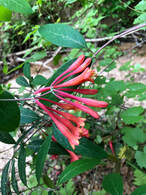 Lonicera sempervirens, Photo: John Kees Lonicera sempervirens, Photo: John Kees 20. Coral honeysuckle (Lonicera sempervirens) -Host for snowberry clearing (Hemaris diffinis) and hummingbird clearwing (Hemaris thysbe). -Flowers are a favorite of hummingbirds. 21. Woolly dutchman’s-pipe (Aristolochia tomentosa) -Host plant for pipevine swallowtail (Battus philenor). 22. Native clematis (Clematis spp.) -High value to solitary bees, also attracts pollinating wasps and flies. *Recommended species for PR drainage: Clematis crispa (marsh leatherflower), Clematis reticulata (net-veined leatherflower), Clematis virginiana (virgin’s-bower), Clematis catesbyana (Catesby’s virgin’s-bower) 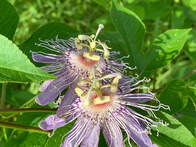 Passiflora incarnata, Photo: Nate Venarske Passiflora incarnata, Photo: Nate Venarske 23. Purple passionflower (Passiflora incarnata) -Preferred host plant for gulf fritillary (Agraulis vanillae). -Flowers attract a variety of pollinators.  Cephalanthus occidentalis, Photo: wildflower.org, Stefan Bloodworth Cephalanthus occidentalis, Photo: wildflower.org, Stefan Bloodworth 24. Buttonbush (Cephalanthus occidentalis) -Not a particularly significant host plant, but the flowers attract very large volumes of pollinators, especially butterflies. 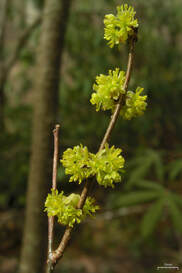 Lindera benzoin, Photo: Jason Hollinger (https://creativecommons.org/licenses/by/2.0) Lindera benzoin, Photo: Jason Hollinger (https://creativecommons.org/licenses/by/2.0) 25. Spicebush (Lindera benzoin) -Host plant for Mississippi’s state butterfly, the Spicebush swallowtail (Papilio troilus). -Very early spring blooms are pollinated mostly by solitary bees and flies. 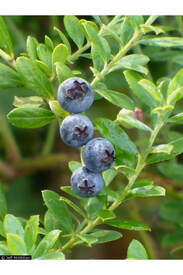 Vaccinium darrowii ©Jeff McMillan Vaccinium darrowii ©Jeff McMillan 26. Wild blueberry (Vaccinium spp.) -Host plant for a wide variety of beneficial insects--collectively (for the genus) several hundred species of butterflies and moths. -Preferred by many specialist bees. -Edible (especially V. formosum and V. virgatum). *Recommended species for PR drainage: Vaccinium stamineum (deerberry), Vaccinium darrowii (Darrow’s evergreen blueberry), Vaccinium elliottii (Elliott’s blueberry), Vaccinium formosum (southern highbush blueberry), Vaccinium virgatum (rabbiteye blueberry) 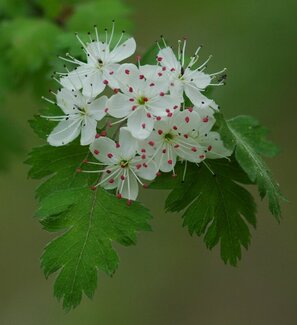 Crataegus marshallii ©Larry Allain Crataegus marshallii ©Larry Allain 27. Native hawthorn (Crataegus spp.). -Important host plant for a wide variety of beneficial insects, including the red-spotted purple (Limenitis anthemis) and Eastern tiger swallowtail (Papilio glaucus). -Fruits are eaten by migratory birds. -Spring blooms are attractive to native bees. *Recommended species for PR drainage: Crataegus opaca (western mayhaw), Crataegus pulcherrima (beautiful hawthorn), Crataegus marshallii (parsley hawthorn), Crataegus uniflora (one-flowered hawthorn), Crataegus ashei (Ashe’s hawthorn), Crataegus triflora (three-flowered hawthorn), Crataegus brachyacantha (blueberry hawthorn). 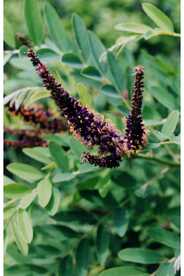 Amorpha fruticosa, Photo: https://plants.sc.egov.usda.gov, Jennifer Anderson Amorpha fruticosa, Photo: https://plants.sc.egov.usda.gov, Jennifer Anderson 28. Tall indigo-bush (Amorpha fruticosa) -Host plant for the southern Dogface (Zerene cesonia), several skippers, and other beneficial insects. -Flowers are mostly pollinated by native solitary bees. 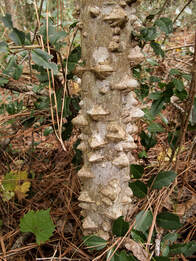 Zanthoxylum clava-herculis, Photo: wildflower.org, Stephanie Brundage Zanthoxylum clava-herculis, Photo: wildflower.org, Stephanie Brundage 29. Hercules’ club (Zanthoxylum clava-herculis) -Host plant for giant swallowtail (Papilio cresphontes). -Attractive to a range of small pollinators, especially pollinating flies and solitary bees. 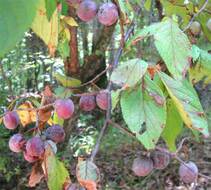 30. Wild plum (Prunus spp.) -Early spring blooms are attractive to native bees. -Edible -Genus hosts many butterflies and moths, including the red-spotted purple (Limenitis anthemis), tiger swallowtail (Papilio glaucus), and several sphinx moths and Saturniid moths . *Recommended species for PR drainage: Prunus mexicana (Mexican plum), Prunus umbellata (flatwoods plum). 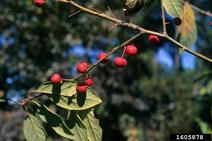 Ilex amelanchier, Photo: John Ruter Ilex amelanchier, Photo: John Ruter 31. Holly (Ilex spp.) -Blooms support several specialist bees. -Berries are important for migratory birds. -Avoid yaupon (Ilex vomitoria) and other evergreen species which have taken over grasslands in south MS and are often considered "native invasives". *Recommended species for PR drainage: Ilex amelanchier (Sarvis holly), Ilex ambigua (Carolina holly), Ilex verticillata (winterberry holly), Ilex decidua (Deciduous holly), Ilex longipes (Georgia holly) 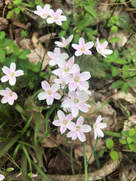 Claytonia virginica, Photo: John Kees Claytonia virginica, Photo: John Kees 32. Spring-beauty (Claytonia virginiana) -Only source of pollen for the specialist bee Andrena erigeniae; major early spring nectar source for many pollinators. -Active in very early spring and can tolerate frequent mowing when not in bloom. -Great transition away from lawn, along with other low-growing early spring bloomers like Ranunculus fascicularis (early buttercup), Anemone caroliniana (prairie anemone), Sisyrinchium spp. (blue-eyed-grass), and Drosera brevifolia (dwarf sundew). General considerations: -Join your native plant society! -Most solitary bees are ground-nesting and need patches of bare soil or sand that aren’t regularly trampled to reproduce. -Cutting back dead stems and blowering leaves in the winter removes overwintering habitat for wildlife. Instead, cut back dead stems in the early spring and leave leaves in place or gently rake them into beds to use as natural mulch (spring ephemerals and forest understory shrubs love hardwood leaf litter!). -Help control invasive species. Invasive plants harm wildlife by escaping from cultivation (via seed and other propagules, often wildlife-dispersed) and disrupting or even completely replacing native plant communities. Removing invasive plants and filling the gaps with native plants is a good way to start introducing natives to your yard. -Only a tiny fraction of exotic (non-native) plants become invasive, but all exotic plants can be harmful when planted over large areas, especially in monocultures. Food chains are powered by native insects which exotic plants cannot support. Conversion of native vegetation to agriculture, tree plantations, landscaping and lawn threatens all native wildlife. -Runoff from lawns pollutes waterways and harms wildlife; lawns are also a major source of greenhouse gases and airborne pollutants. Lawn removal should be a focus of native plantings. Native "meadow" plantings using grassland plants (sun) and “sedge lawns” (shade) are much lower-maintenance alternatives. Native wetland buffers and rain gardens can help filter runoff and control erosion. Species selection: -Greater diversity of native plants = greater diversity of wildlife. Native insects tend to specialize on a few species or genera of native plants. -Ecoregions, not zones! As native plantings develop, the goal, overall, should be to mimic the plant communities which naturally occurred in the area. Species that occur within the same ecoregion as the planting in similar habitat (consider soil, moisture, slope, shade) will benefit wildlife the most and be easiest to maintain. -Most MS and LA uplands were historically prairie, savannah, or open woodland, maintained by frequent surface fires--not forest! These “treed grasslands” are incredibly diverse, but nearly all of the diversity is in the herbaceous understory (grasses and wildflowers), with a handful of scrubby, fire-adapted shrubs. Grassland plants are critical for pollinators in the southeast and should be the focus in sunny or semi-sunny locations. -“Powerhouse” plants are great to start with, but the high numbers of insects hosted can be misleading. Insects can require different plants and different habitats at different life stages and many “powerhouse” plants are generalists which have expanded their ranges in recent years (e.g. mesophytic oaks). Establishment & maintenance: -Native plants don’t need soil amendments or fertilizers! Not all native plants grow in all soil types, but all soil types have native plants adapted to them. -Mississippi native plants evolved under conditions of intense competition. They're most effective when allowed to intermingle with other species that occur in the same habitat, not grown as individual specimens in manicured, mulched landscaping beds. -Weeds can be a problem early on, but native perennials are strong competitors and will eventually push out annual and biennial weeds. -Growing native plants from seed is cheap, but good site prep is essential--avoid soil disturbance, use a non-persistent herbicide like glyphosate. Grassland plants develop extensive root systems so they will not flower for the first 2-3 years (“first year they sleep, second year they creep, third year they leap”). Sources that sell native seed and do native grassland restoration can provide more detailed info. -Native grassland plants are adapted to frequent fire and will benefit from spring burns every 1-3 years once established to control weeds and stimulate growth and reproduction. Some will only bloom and fruit reliably if burned or mowed periodically, and most native perennials will put out a flush of new growth post-burn. Mowing and raking is a helpful alternative for urban areas where burning is prohibited. Shopping for native plants: -Scientific names are the best way to get accurate info. Copy and paste! -Use local genetic material whenever possible (plants sourced within the same ecoregion, or, even better, the same or a nearby county). Local ecotypes are best for wildlife and will be easiest to maintain over time. Cross-contact with non-local plants and cultivars can have negative genetic effects on local, native populations. -Cultivars (horticultural selections) of native plants (“nativars”) should be avoided. Denoted with single quotes. E.g. Iris ‘Ann chowning’ or Stokes’ aster ‘Peachie’s pick’. In extreme cases they may be completely unusable to wildlife the local ecotype supports. -Always check to make sure a plant is actually native before purchasing it. Nurseries can be deceptive. Useful Resources:
-Mississippi Native Plant Society (join at https://www.mississippinativeplantsociety.org/) and Facebook group (https://www.facebook.com/groups/1947279902251372/) -Louisiana Native Plant Society (https://www.lnps.org/); chapters--Folsom native plant society (http://folsomnps.org/), Capital area native plant society (http://canps.weebly.com/), Native plant initiative of greater New Orleans (https://www.npi-gno.org/); Facebook discussion groups: https://www.facebook.com/groups/1054570457994403 https://www.facebook.com/groups/1583694195234726/, https://www.facebook.com/groups/npigno. -High-quality images and species profiles: https://warcapps.usgs.gov/PlantID/, https://www.wildflower.org/, http://www.southeasternflora.com/index.php. -iNaturalist (https://www.inaturalist.org/home). For documenting wild plants (native or exotic, cultivated plants will be marked as Casual grade). iNat is regularly used in research and already helping clarify species distributions and locate new populations of both rare native species and recently introduced species. The iNat community is full of experts who can help ID plants. -Searchable list of nonnative invasive plants https://www.invasive.org/weeds.cfm -Weakley’s flora (2020): https://ncbg.unc.edu/research/unc-herbarium/flora-request/. The definitive resource for plant ID in the southeast, with a comprehensive dichotomous key covering the entire region (>10,000 species). Species entries include info (often more up-to-date) found in all of the following sources. Has an index of common names, complete synonymies & basic habitat info for each species. -BONAP is the best source for county distribution maps (see color key): (http://bonap.net/NAPA/Genus/Traditional/County). -EPA level III and IV ecoregions: (https://www.epa.gov/eco-research/ecoregion-download-files-state-region-4#pane-22). -https://www.itis.gov/. Useful when horticultural sources use outdated scientific names. Type in any scientific name and it will come up with the currently accepted name and all synonyms. |
AuthorPearl Riverkeeper is a licensed member of the Waterkeeper Alliance, the largest and fastest growing nonprofit solely focused on clean water. Archives
July 2024
Categories |
|
Ready to support our work for Clean Water and Healthy Rivers?
|
|

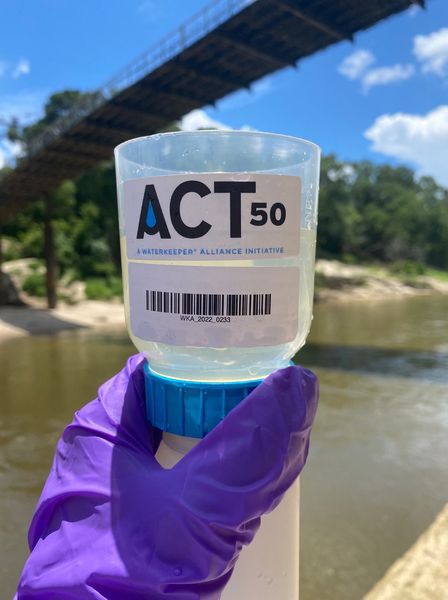
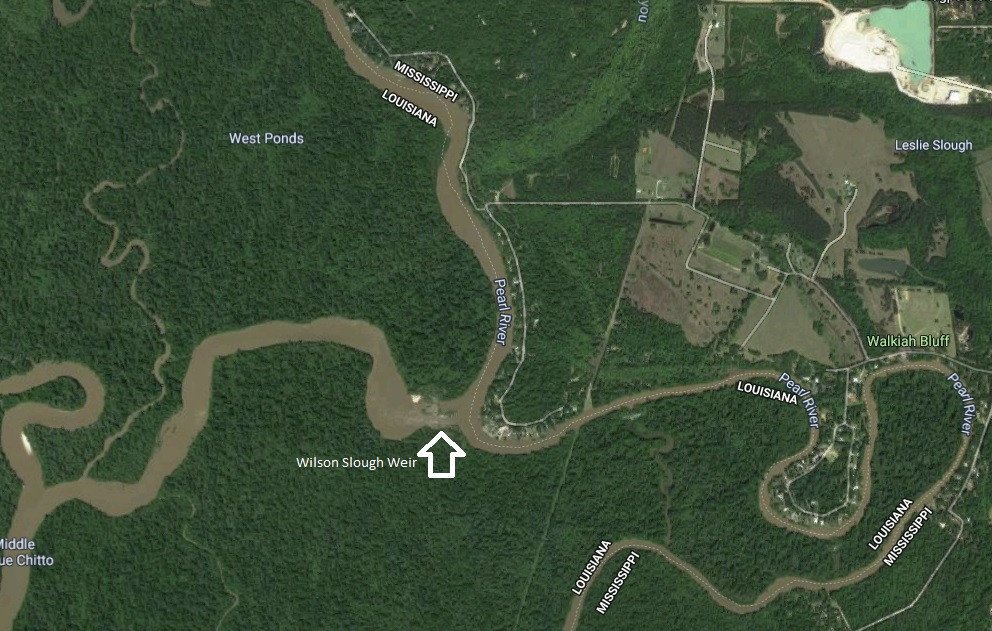
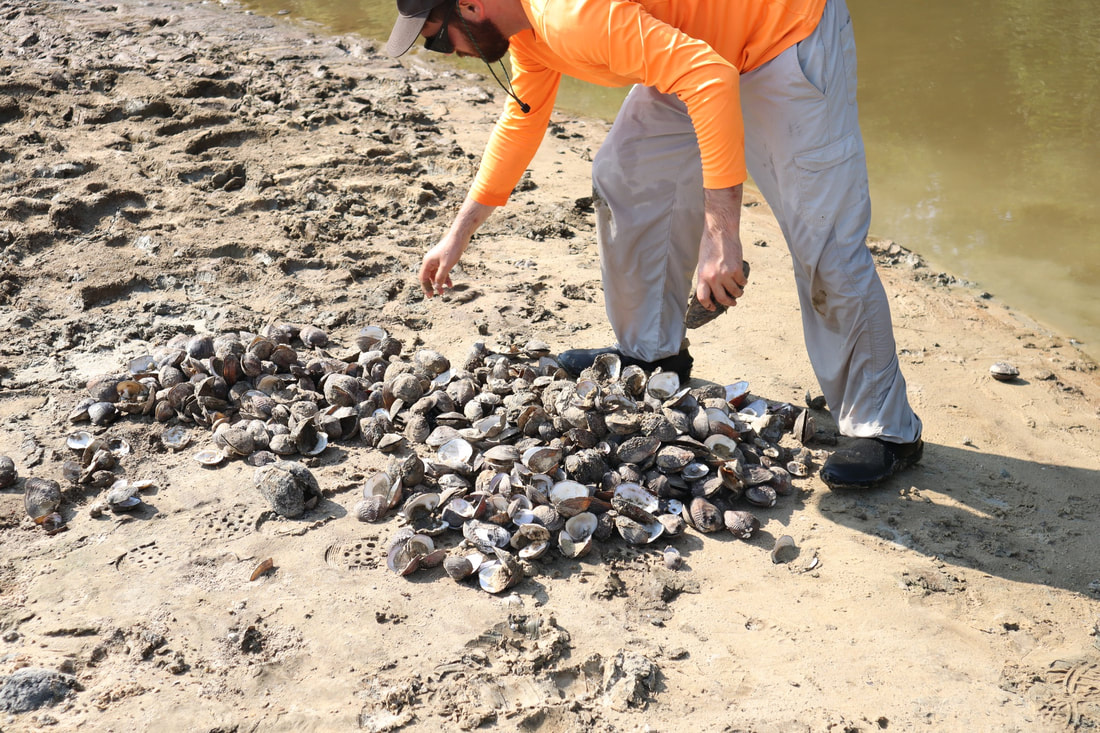
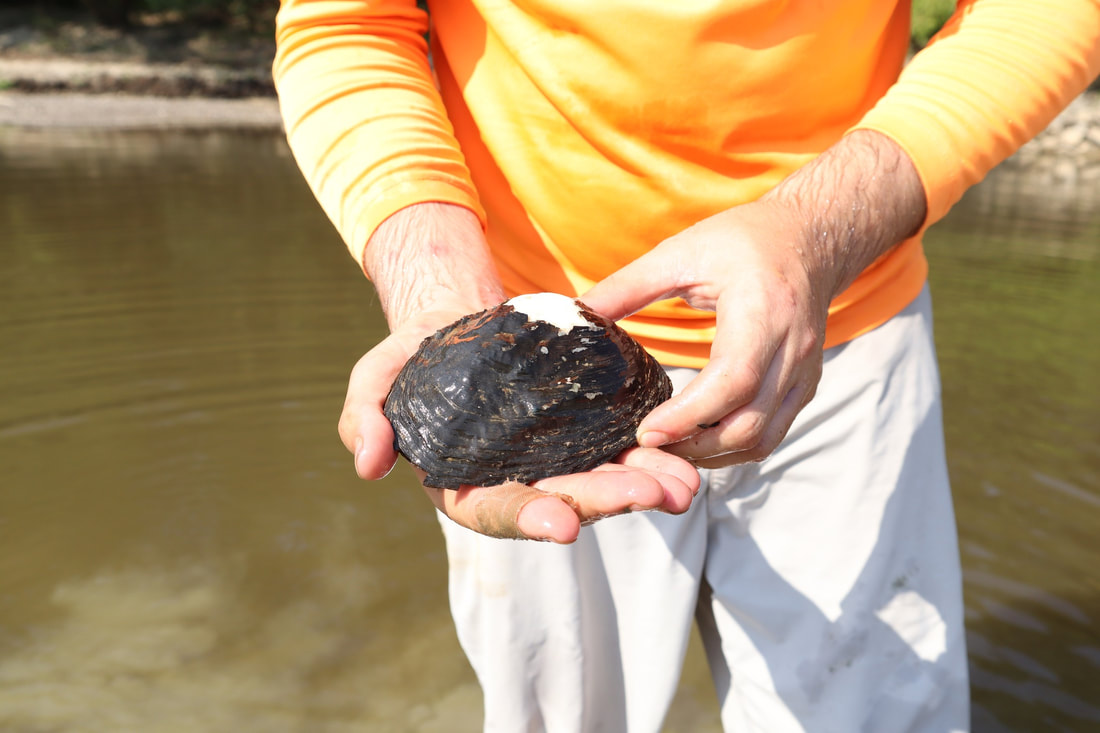
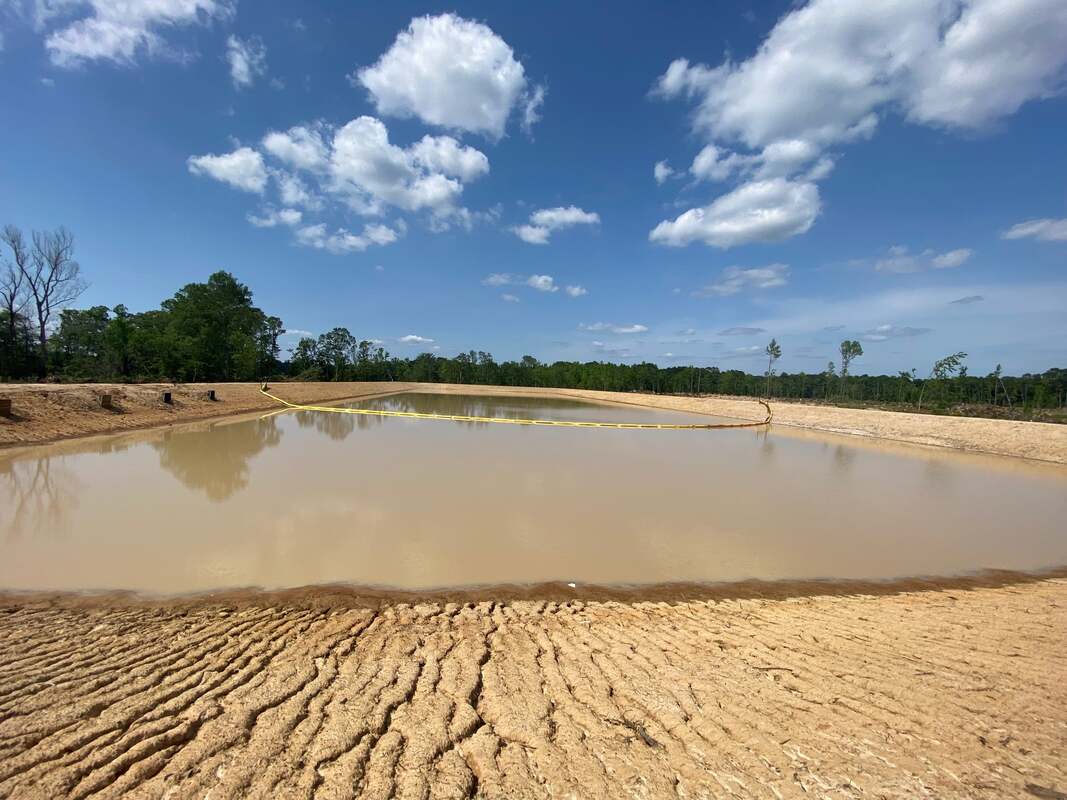
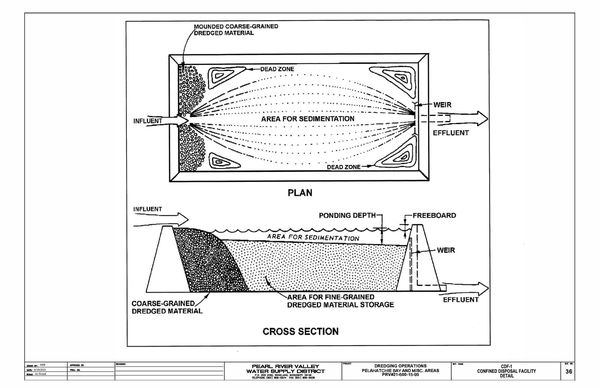
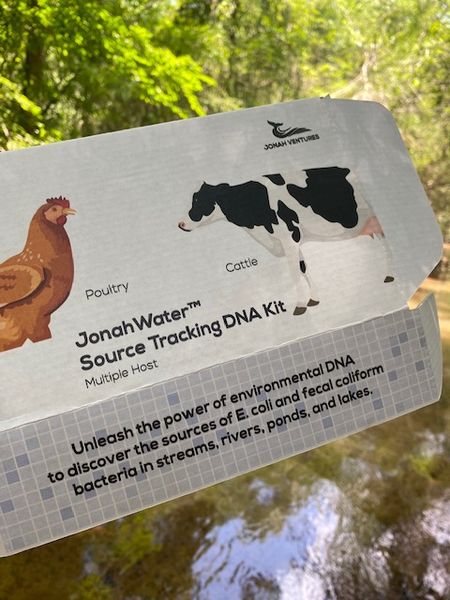
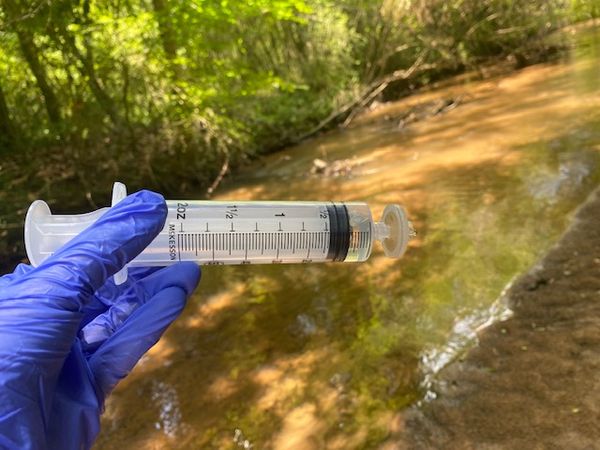
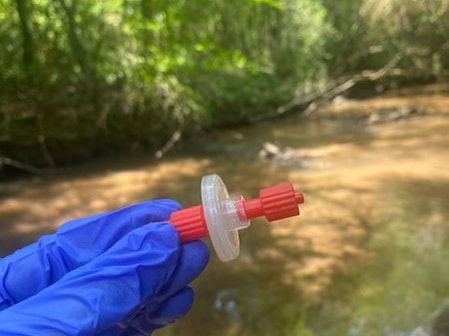
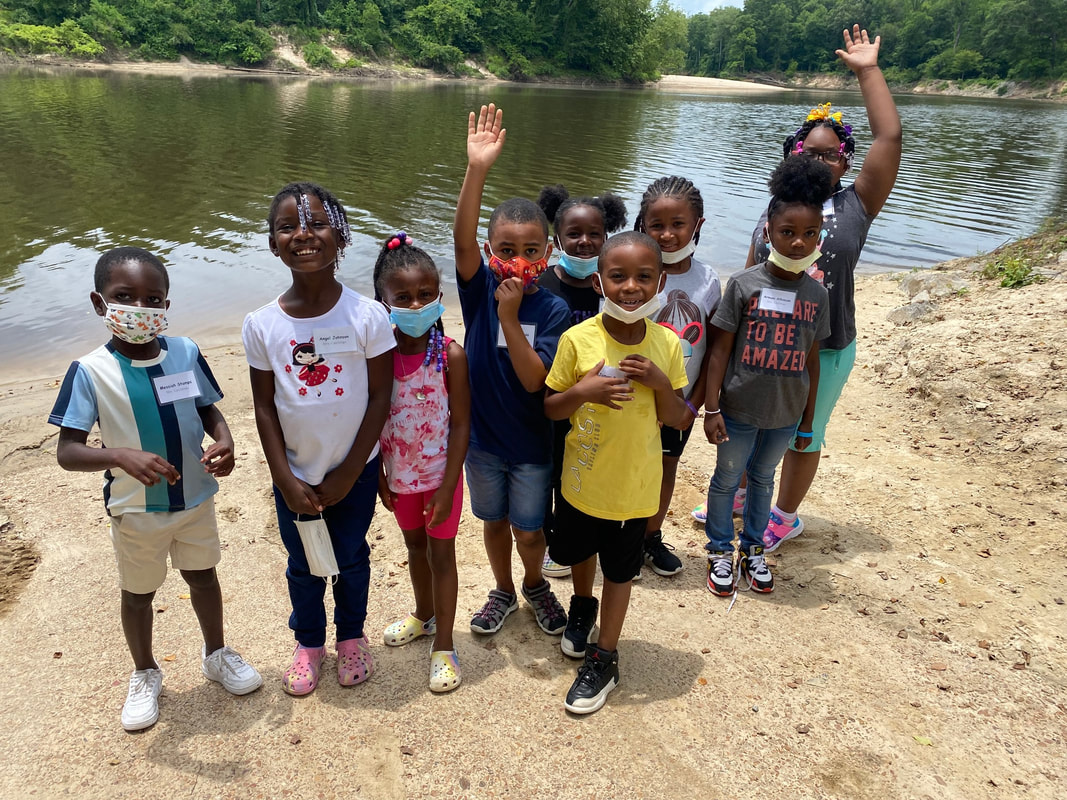
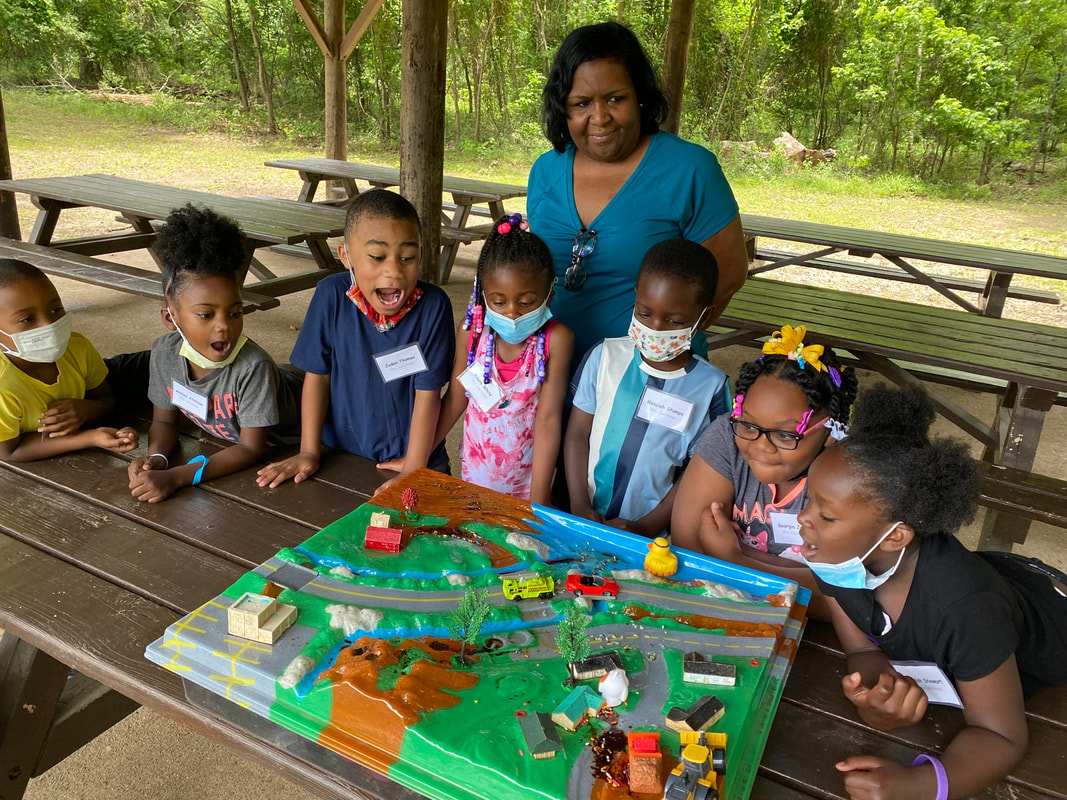
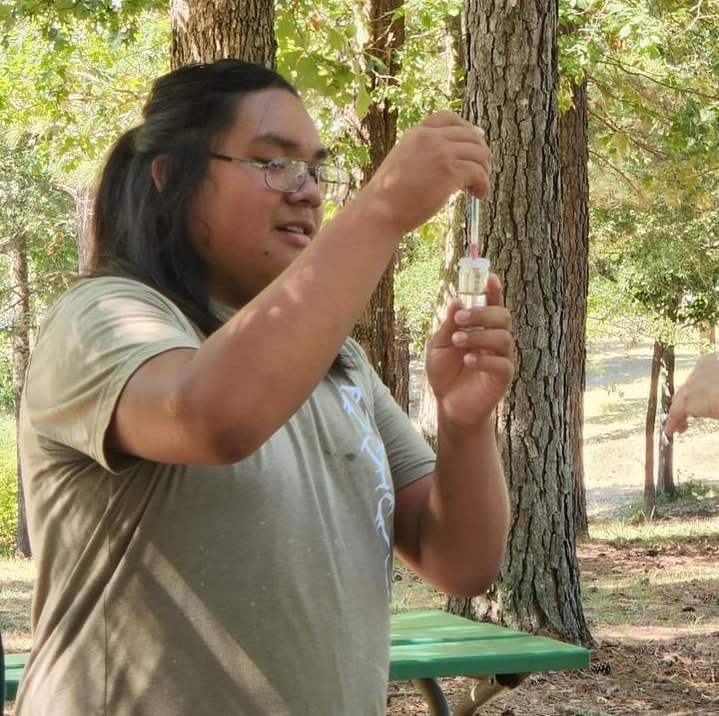
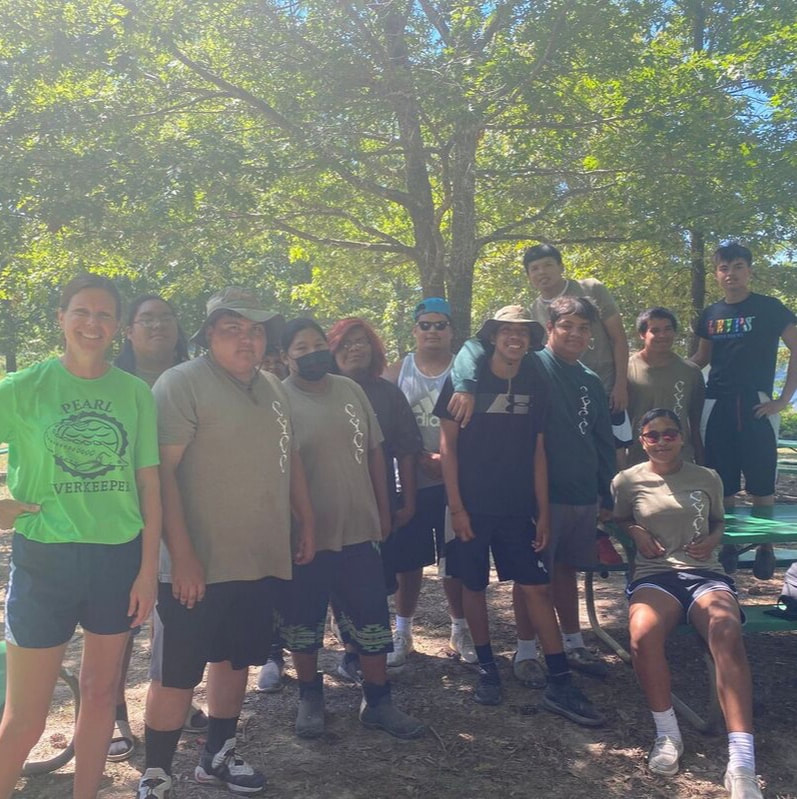
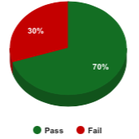
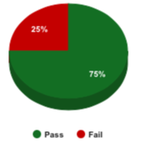
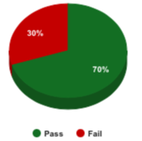
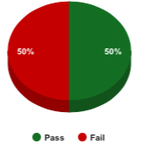

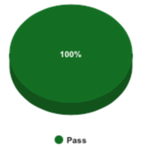
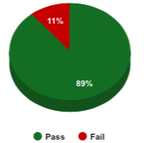
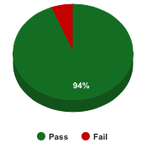
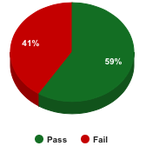
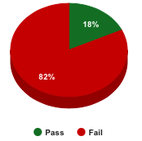


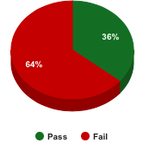
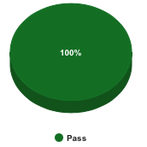
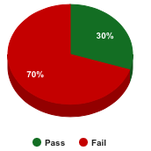
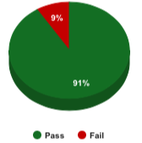

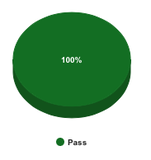
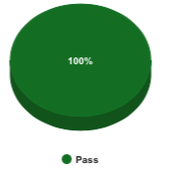
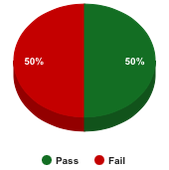
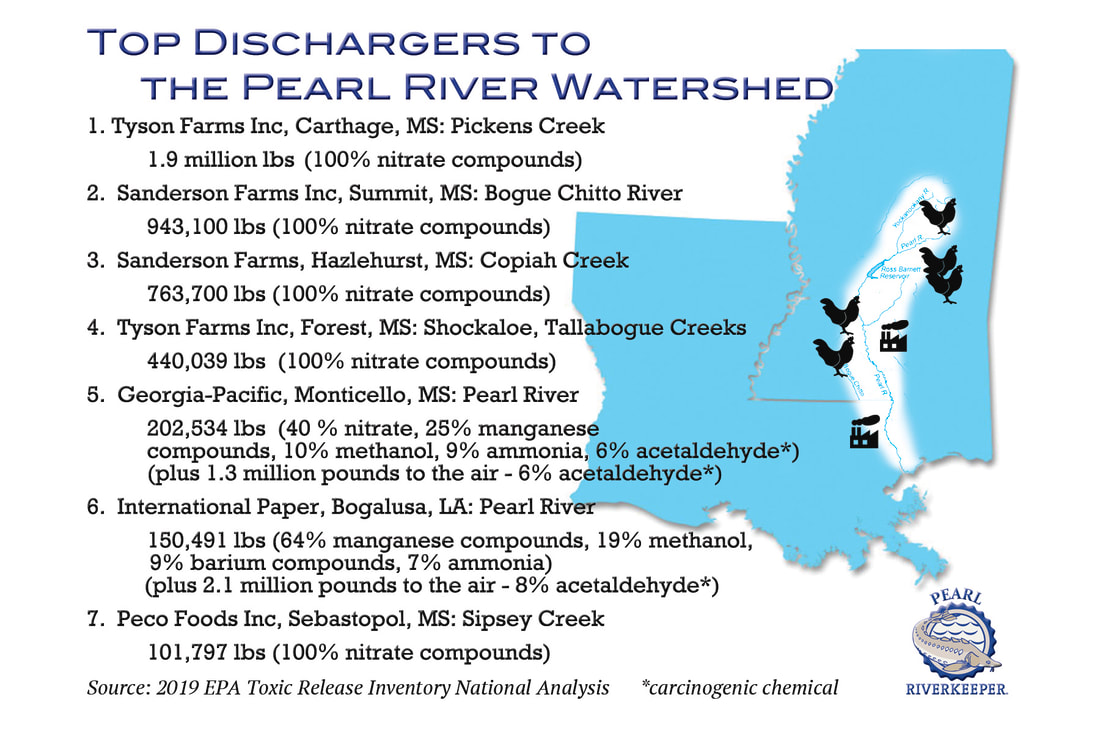
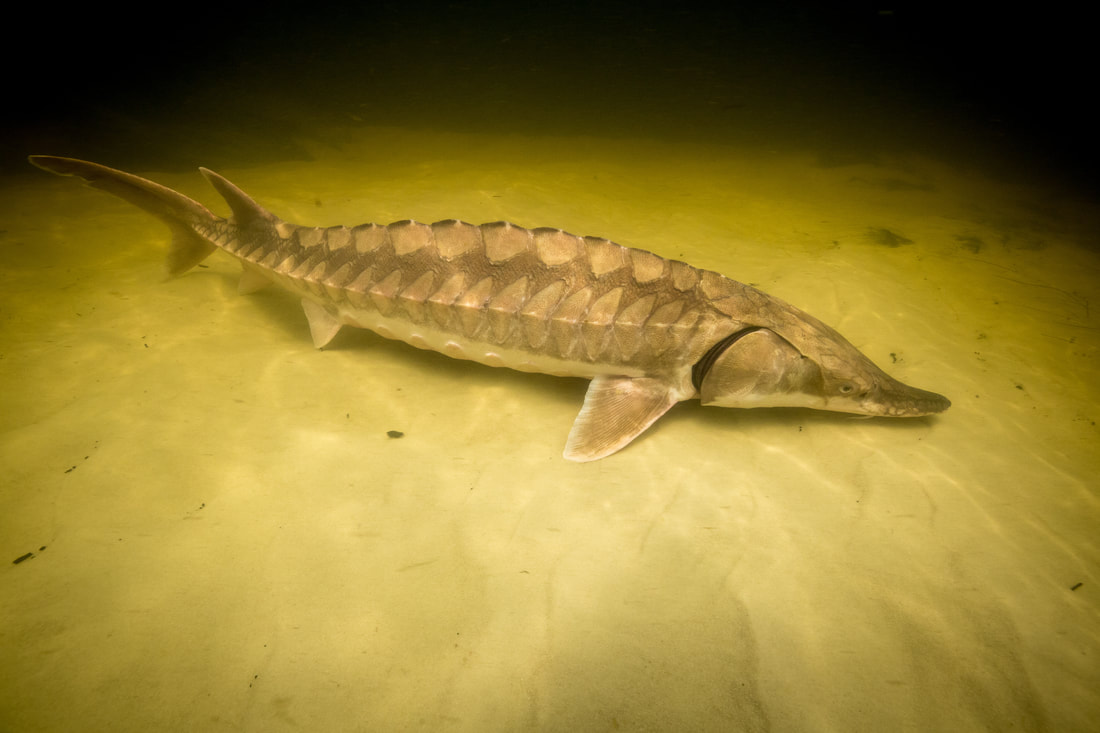
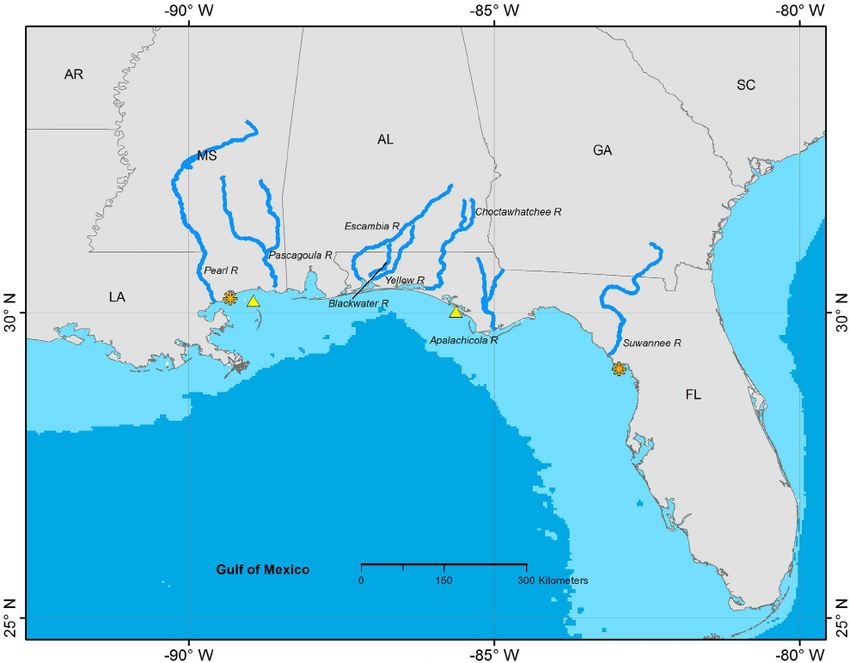
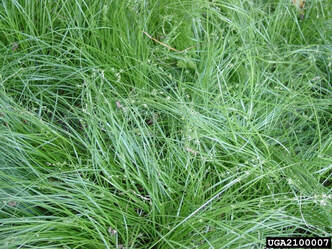
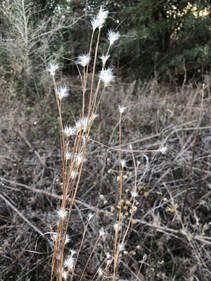
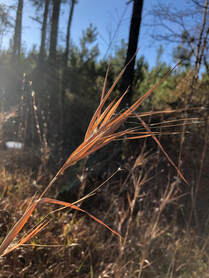
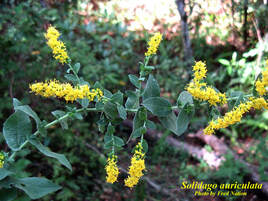
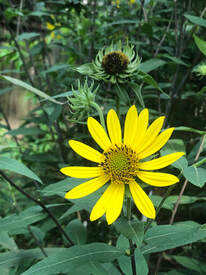
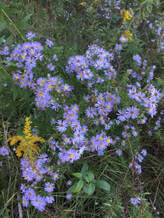
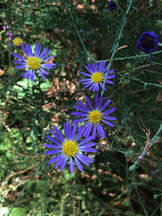
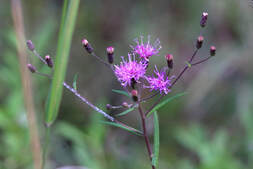
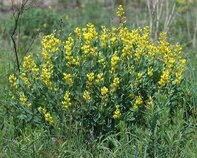
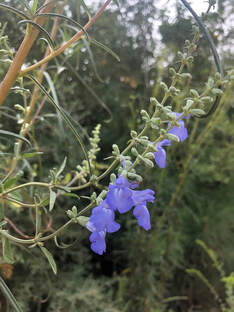
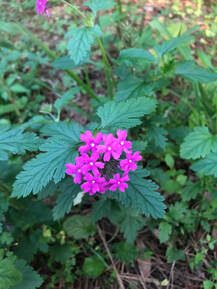
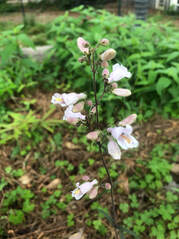
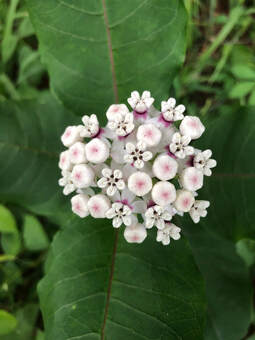
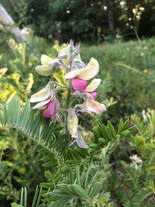
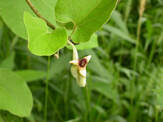
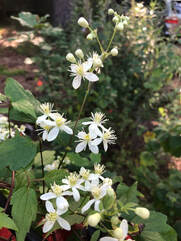
 RSS Feed
RSS Feed
